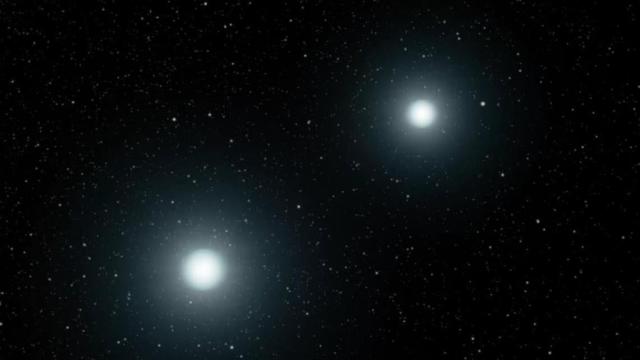Over 10,000 light-years from Earth, two mega-hot stars are changing what astronomers know about stellar evolution and how the gassy balls can be constructed. The stars are unique for their exotic surface composition: They are cocooned in carbon and oxygen, the ashen remains of helium burning.
The stars were recently discovered by a team based in Germany using data from the Large Binocular Telescope in Arizona and the LAMOST survey. The stars are dense and burn very hot, with surface temperatures about 10 times greater than our Sun. It’s their surfaces that make them so special, as they’re constituted by carbon and oxygen, which are produced when helium burns. Details about the discovery of PG1654+322 and PG1528+025 were recently published in the Monthly Notices of the Royal Astronomical Society.
While the stars’ surfaces are carbon and oxygen, their cores are thought to still be helium, based on their temperatures and radii. That’s strange.
“Normally we expect stars with these surface compositions to have already finished burning helium in their cores, and to be on their way to becoming white dwarfs,” said Klaus Werner, an astronomer at the University of Tübingen in Germany and lead author of the new paper, in a Royal Astronomical Society release. “These new stars are a severe challenge to our understanding of stellar evolution.”
In other words, the exterior of the stars seem to have already undergone nuclear fusion, but their cores are still lively nuclear reactors. (That distinguishes the objects from white dwarfs, which are small compact stars at the very end of their life, devoid of nuclear fuel.) The discovery of this exotic structure naturally leads to the question of how these stars might have originated. Alongside this team’s research is a second new paper, also in the Monthly Notices of the RAS, that explores how the rare stellar class may emerge.
“We believe that the weird objects discovered by Klaus Werner might have been formed through a rare type of stellar merger,” said Miller Bertolami, an astrophysicist at the Institute for Astrophysics of La Plata in Argentina and lead author of the second paper, in an email. “We argue in our paper that, under the right conditions, a carbon-oxygen white dwarf might be disrupted and accreted by a companion, forming objects as those discovered by Werner et al.”
During a merger between two white dwarfs, Bertolami added, the more massive object can break the smaller object apart with its gravitational pull. Rather than two stars amicably mixing material to become one star, the interaction may be more like a hand putting on a glove, with one star cannibalising the other.
Going forward, the researchers will need to change their stellar evolution models to test whether such mergers could actually result in stars like PG1654+322 and PG1528+025. There are some burning questions that still need to be answered.
